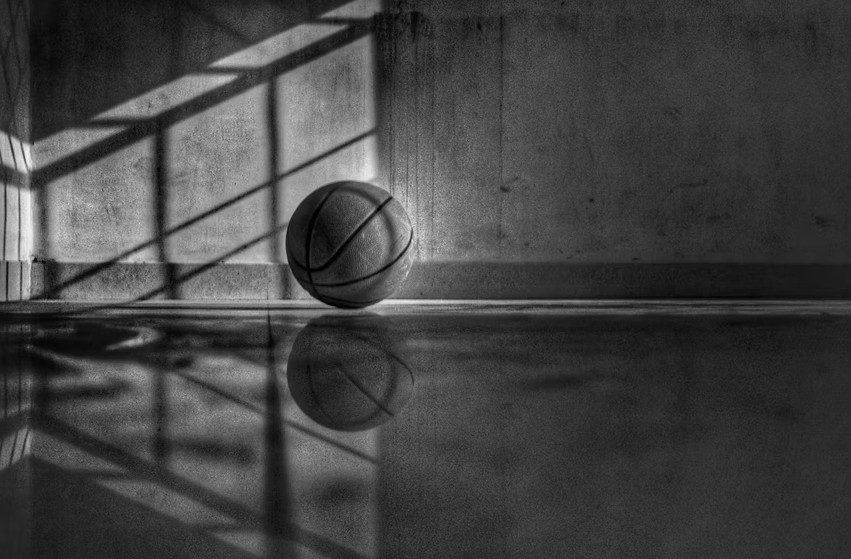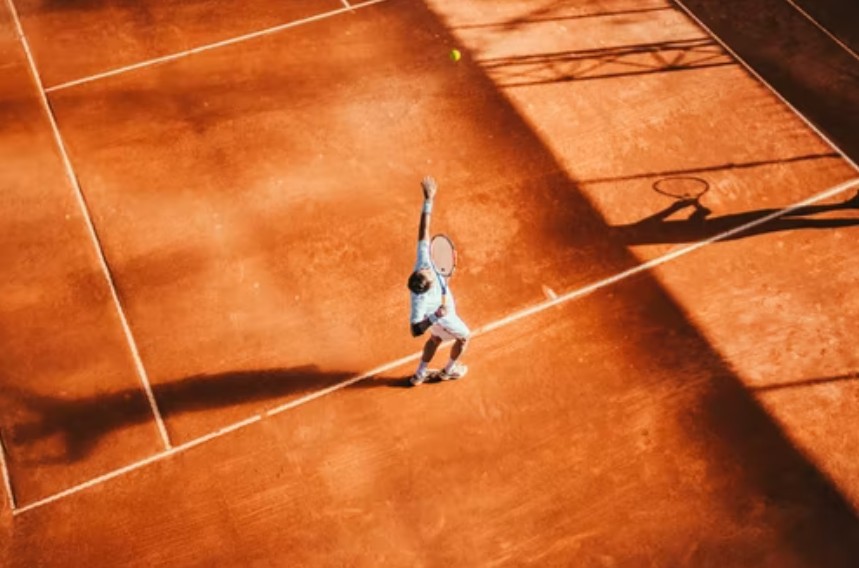Color blindness is a condition. A person with it has trouble distinguishing certain colors or similar ones. Color blindness is a genetic disorder that affects millions of people, including many athletes. In this article we look at how being color blind can impact sports performance.
Color blindness And Athletes
Color blindness can be a problem for athletes, especially if they have red-green color blindness.
For those who are color blind, playing sports can be a challenge. Color blindness is more common in men than women, and the most common type of color blindness is red-green color deficiency. Someone with this color blindness cannot tell red from green objects. They also cannot tell different shades of those colors apart.
Another way to describe it: If you have red-green color blindness, you will see some shades as gray instead of blue or purple. For example, your baseball cap may look gray rather than blue or purple because there are no green threads in the fabric!
If you are a color blind athlete, you should talk to your coach about equipment and field markings. You may be able to wear tinted lenses or goggles that help with the problem. Also, a lot of sports teams use colors as signals or markers during games: if a player is hit by another player on his team, he will often say “Red!” to indicate the fact that it was an accident and not intentional. If you have red-green color blindness, this can be a big problem for athletes. Many sports need players to tell these two colors apart (e.g., football uniforms). If your child has this vision problem, they need early diagnosis. They must learn to adapt to not miss out on any opportunities due to color blindness!
Colorblind Player And Problems
Other teams that use different uniforms might cause problems for a colorblind player.
If you are a color blind athlete, you should talk to your coach about equipment and field markings. You may be able to wear tinted lenses or goggles that help with the problem. Also, a lot of sports teams use colors as signals or markers during games: if a player is hit by another player on his team, he will often say “Red!” to indicate the fact that it was an accident and not intentional.
If you have red-green color blindness, this can be a big problem for athletes. Many sports need players to tell these two colors apart (e.g., football uniforms). That’s why if your child has this vision problem, it’s crucial that they get an early diagnosis. They can learn to adapt and not miss out on opportunities due to color blindness!
Find ways to adapt.
Even if you aren’t a sports person, find ways to adapt. There are lots of ways that color blindness can be worked around. For instance:
- Colorblind people can still watch and enjoy sports. They just have to learn how to follow the action more closely than some other viewers might
- Colorblind coaches can also coach their teams without any problem, as long as they keep in mind what signals were given during each play
The same goes for referees and journalists – just do your best to make sure that everyone else understands what’s going on with the game!
Baseballs And color blindness

Baseballs are white with red stitches, but they look gray to someone with red-green color blindness. Red and green are the problem colors. You can see this in print by looking at the words “Red” and “Green.” Any word with a red or green in it will be hard to read as it will look like a different shade of gray.
ColorBlind Glasses And Golfer
ColorBlind Glasses is the perfect accessory for a golfer with color blindness.
Do you know a golfer with color vision deficiency? ColorBlind Glasses are available in three different colors that can help make it easier to see the ball against the green. The red lens is best for seeing the ball on the ground or in tall grass. The blue lens helps tell sky from grass. The yellow lens makes it easy to see your ball from afar.
It is also a great gift for sports fans with colorblindness. This includes golfers, baseball players, basketball players, football fans, and soccer enthusiasts. We appreciate your support!
Color Blindness Glasses And Baseball Player

Color Blindness Glasses Can Change a Baseball Player’s Life
Color blind baseball players struggle. They can’t tell the white ball from the white stitches. They also struggle to distinguish between the ball and grass on a baseball field. Color blind glasses can help these players see more clearly, which is great for them.
Color blindness changes how an individual sees colors; it does not mean that an individual cannot see color at all. Most colorblind people see colors as shades of gray, not as different reds or greens.
Color blindness glasses can change a baseball player’s life. Color blind players have trouble distinguishing between the white ball and the white stitches on it. This can be dangerous if they don’t see the ball coming toward them! But with color blind glasses, everything changes. Color blind players no longer have trouble telling which is which. These special glasses fix their vision. Now, they will always catch that ball no matter what.
Color Blindness Glasses And Tennis Player

Color Blindness Glasses Can Help a Tennis Player Improve Their Game
Tennis players of all ages and skill levels can face challenges with color blindness. For example, if you’re playing against someone with mild red-green color blindness, they may struggle to tell red from green balls on the court. The same applies to other types of sports like baseball or golf.
The glasses will make it easier for you to stand out on the court. They’ll make your outfit look unique but still let you track your balls!
Colorblind glasses work for those who have red-green colorblindness.
Famous colorblind athletes
Many famous colorblind athletes overcame their colorblindness. They went on to achieve fame and success. Michael Jordan is the most well-known, being one of the greatest basketball players in history. He has won six NBA championships and five MVP awards. Tiger Woods is another famous athlete. He was born with red-green color blindness. But, he has overcome it to become one of golf’s greatest players. Derek Jeter, Michael Phelps, and Babe Ruth are other examples. They were diagnosed with red-green color blindness as children or young adults. But, they went on to achieve incredible success in their sport despite this limit..
Derek Jeter, however, had an interesting way of overcoming his color blindness. He saw colors by putting himself in high-contrast situations. Tiger Woods has only been able to overcome his condition. He uses glasses to see colors more clearly when playing golf. It is possible for athletes with this type of color blindness to achieve success if they have access to the right equipment.
Michael Phelps, Babe Ruth have all had very successful careers in sports despite being colorblind. Some color blind athletes have beaten their condition by using special equipment. They wear glasses that fix red-green color blindness.
Not a huge handicap in life
Color blindness, while not a huge handicap in life, can be more troublesome in certain situations — know what your options are
Colorblindness is a relatively common condition, affecting about 10% of the population. It can be more troublesome in some situations, like driving or reading a map. And, colorblind people might get a bad grade on their homework once in a while. But, there’s no reason why you can’t enjoy sports as much as anyone else.
Color blindness, also called color vision deficiency (CVD), is inherited. It is caused by problems in the cones of your retina. These cones perceive reds, greens, and blues. You might think this would make it hard for someone to play sports but this isn’t true at all! People with color-deficiency can tell objects apart by shape and size. So, they should have no trouble playing basketball or baseball. The only trouble may be in football, where knowing which team has the ball is key. As long as they avoid orange jerseys (which look yellow) they’ll do fine with basketball — but if they’re playing soccer then maybe not so much since green grass looks brownish sometimes too…
Conclusion
Color blindness is not a major handicap in life, but it can be more troublesome in certain situations — know what your options are. If you are an athlete with color blindness, talk to your coach about equipment and field markings. Other teams that use different uniforms might cause problems for a colorblind player. Even if you aren’t a sports person find ways to adapt – there are glasses that reduce red green color blindness.

